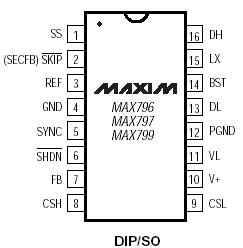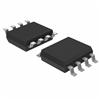MAX796: Features: .96% Efficiency.4.5V to 30V Input Range.2.5V to 6V Adjustable Output.Preset 3.3V and 5V Outputs (at up to 10A).Multiple Regulated Outputs.+5V Linear-Regulator Output.Precision 2.505V Refer...
floor Price/Ceiling Price
- Part Number:
- MAX796
- Supply Ability:
- 5000
Price Break
- Qty
- 1~5000
- Unit Price
- Negotiable
- Processing time
- 15 Days
SeekIC Buyer Protection PLUS - newly updated for 2013!
- Escrow Protection.
- Guaranteed refunds.
- Secure payments.
- Learn more >>
Month Sales
268 Transactions
Payment Methods
All payment methods are secure and covered by SeekIC Buyer Protection PLUS.

 MAX796 Data Sheet
MAX796 Data Sheet







